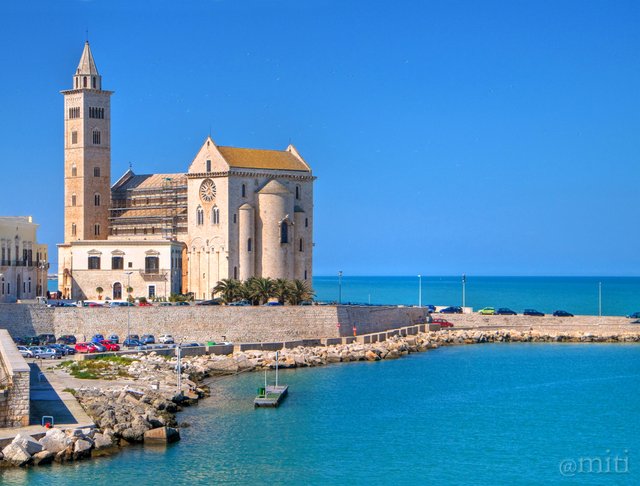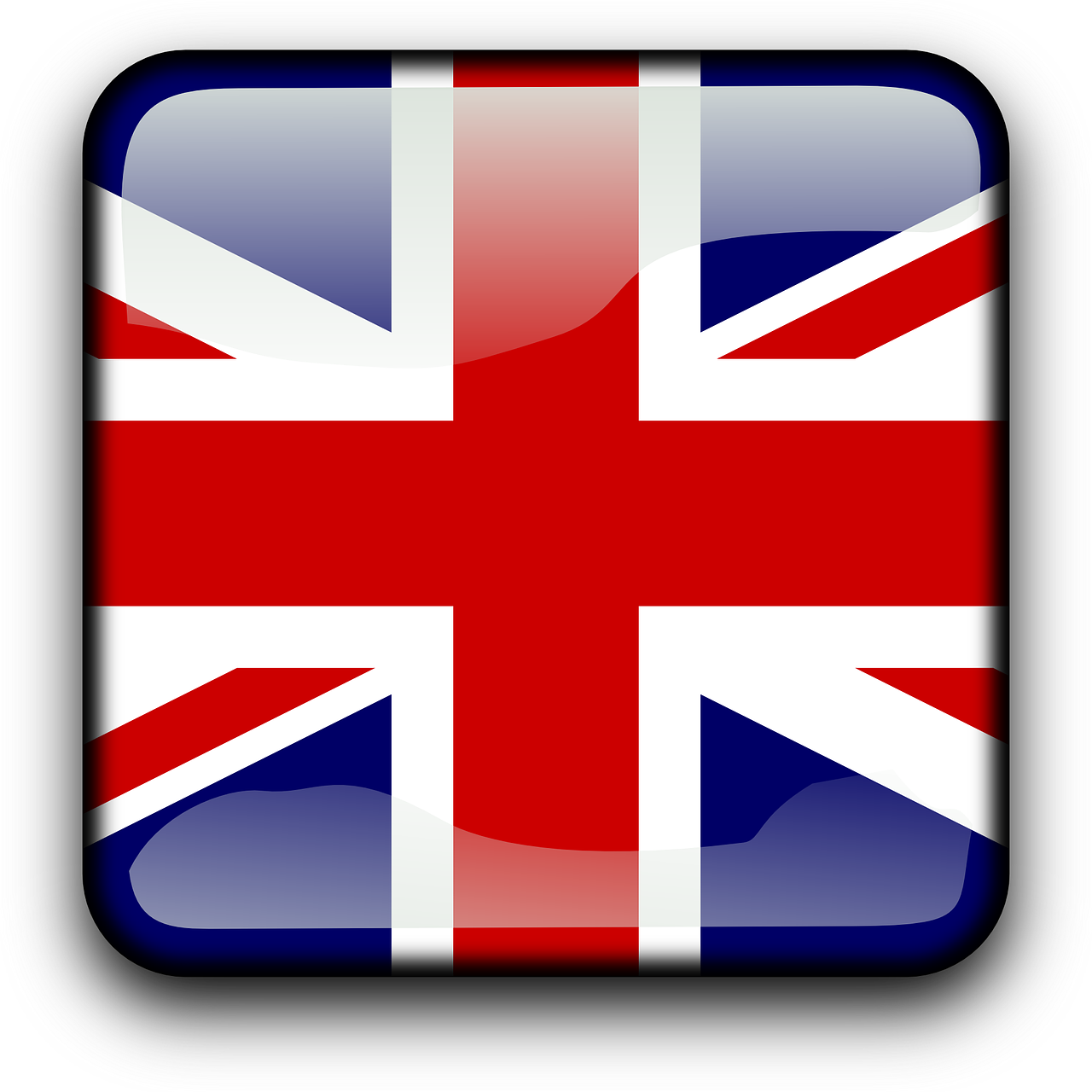A Journey through Italy: one photo every day #150 - TRANI [ENG/ITA]

The Cathedral of Trani (Author's photo - All rights reserved)
La Cattedrale di Trani (Immagine dell'autore - tutti i diritti sono riservati)



Ciao a tutti,
questo è un viaggio attraverso l'Italia. Posterò una foto al giorno con una brevissima descrizione. Spero vi piaccia!

Trani è una città nella provincia di Barletta/Andria /Trani (BAT), nella regione meridionale della Puglia. È comunemente conosciuta come "la perla dell'Adriatico", così come per la produzione di un particolare tipo di marmo, la pietra di Trani.
Con il nome di Turenum, la città appare per la prima volta nella Tabula Peutingeriana, una copia del 13 ° secolo di un antico itinerario romano, anche se le prime tracce di insediamenti risalgono al IX secolo. La città fu in seguito occupata dai Longobardi e dai Bizantini.
Anche se la sua storia risale a poco più avanti, Trani, che si trova appena a nord di Bari, divenne la graziosa città che è oggi tra l'XI e il XIII secolo.
La sua posizione strategica sulla costa adriatica ne fece un importante punto di partenza per le Crociate e un fiorente centro commerciale, attirando molte famiglie dalle grandi repubbliche marinare italiane, con le quali mantenne strette relazioni diplomatiche. Nello stesso periodo, Trani ospitò anche la più grande comunità ebraica del sud Italia, a testimoniare la presenza dell'imponente sinagoga di Scolanova.
L'imperatore Federico II costruì un imponente castello a Trani. Sotto il suo dominio, all'inizio del XIII secolo, la città raggiunse il suo punto più alto di ricchezza e prosperità.
Trani entrò in crisi sotto il dominio angioino e aragonese (XIV-XVI secolo), poiché la sua componente ebraica fu perseguitata. Sotto la casata dei Borbone, Trani recuperò un certo splendore, grazie alle condizioni generalmente migliorate dell'economia del Mezzogiorno e alla costruzione di alcuni magnifici edifici.
Il centro storico, un'incantevole rete medievale di strade con molte chicce architettoniche, è organizzato intorno al pittoresco porto. Da qui, dirigendosi verso l'estremità nord del porto, si arriva alla Cattedrale, un favoloso esempio di architettura romanica il cui chiaro calcare bianco e alte proporzioni enfatizzano la sua splendida posizione accanto al profondo blu del mare Adriatico.
Completata nel 1143 e dedicata a San Nicola il Pellegrino, la cattedrale ha una pianta basilicale, con tre absidi e una grande cripta. I suoi tetti (tri)angolari sono sostenuti da possenti mura punteggiate da alte finestre, dando una sensazione fortificata. L'estremità ovest presenta un rosone e un portale finemente scolpito le cui porte in bronzo originali, l'opera di Barisano di Trani, sono ora conservate all'interno. Sul lato sud c'è un'imponente torre alta 60 metri, aggiunta nel 1239.
Costruito nel 1233 da Federico II di Svevia, il castello di Trani fu costruito sul mare per adempiere allo scopo di difendere la città. Il maniero ha una pianta quadrangolare, con torri squadrate agli angoli e un cortile centrale, mentre sui tre lati, verso terra, è stato successivamente aggiunto il muro esterno.
All'inizio del 1800 divenne una prigione e solo nel 1974 gli ultimi detenuti si trasferirono in una nuova struttura.
Dietro il porto, puoi esplorare il quartiere ebraico della Giudecca, un labirinto di piccoli vicoli, sinagoghe e botteghe di artigiani. Nelle vicinanze, si trova la Villa Comunale con i suoi rilassanti giardini pubblici sul mare, mentre a circa un miglio dalla città, c'è il Monastero di Santa Maria Colonna.
L'elegante porto, racchiuso dai moli di Santa Lucia e Sant'Antonio, è il cuore pulsante della città.
Cosa vedere: il Centro storico, la Cattedrale, il Castello Svevo, il Monastero di Santa Maria Colonna, la Sinagoga di Santa Maria Scolanova, il Museo Diocesano, il Palazzo della Caccetta, il Museo delle Carrozze, il De Palazzo Angelis, la Parrocchia di San Clemente, la Chiesa di Ognissanti, il Palazzo delle Arti di Beltrani e la Pinacoteca "Ivo Scaringi", la chiesa rupestre di Santa Geffa, la Chiesa Ognissanti, la Chiesa di San Giacomo, la Chiesa di Santa Chiara.

Hello everyone,
I began a Photo Journey through Italy. I will post one photo every day with a little note of explanation. I hope you like it!

Trani is a city in the province of Barletta/Andria/Trani (BAT), in the southern Italian region of Puglia. It is commonly known as "the pearl of the Adriatic", as well as for the production of a particular type of marble, the stone of Trani.
With the name of Turenum the town appears for the first time in the Tabula Peutingeriana, a 13th century copy of an ancient Roman itinerary, though the earliest traces of settlements go back to the 9th century. The city was later occupied by the Lombards and the Byzantines.
Although its history goes back somewhat further, Trani, which lies just north of Bari, became the lovely town it is today between the 11th and 13th centuries.
Its strategic position on the Adriatic coast made it an important departure point for the Crusades as well as a flourishing commercial centre, attracting many families from Italy's great Maritime Republics, with whom it maintained close diplomatic relationships. In the same period, Trani was also home to southern Italy's largest Jewish community, testament to whose presence is the impressive Scolanova synagogue.
Emperor Frederick II built a massive castle in Trani. Under his rule, in the early 13th century, the city reached its highest point of richness and prosperity.
Trani entered a crisis under the Anjou and Aragonese rule (14th-16th centuries), as its Jewish component was persecuted. Under the House of Bourbon Trani recovered a certain splendour, thanks to the generally improved condition of Southern Italy economy and the construction of several magnificent buildings.
The old town centre, a charming mediaeval network of streets with plenty of fine architecture, is arranged around the picturesque fishing port. From here, heading to the north end of the port, one comes to the cathedral, a fabulous example of Romanesque architecture whose creamy white limestone and lofty proportions emphasise its stunning location beside the deep blue of the Adriatic Sea.
Completed in 1143 and dedicated to Saint Nicholas the Pilgrim, the cathedral has a basilica plan, with three apses, and a large crypt. Its (tri)angular roofs are supported by mighty walls punctuated by high windows, giving a fortified feel. The west end features a rose window and a finely sculpted portal whose original bronze doors, the work of Barisano di Trani, are now conserved inside. On the south side is an imposing 60m-high tower, added in 1239.
Built in 1233 by Frederick II of Swabia, the Castle in Trani was constructed on the sea to fulfil the purpose of defending the city. The manor has a quadrangular shape, with squared towers at the corners and a central courtyard, while on the three sides, toward the ground, was later added the outer wall.
In the early 1800s it became a prison and only in 1974 were the last inmates moved to a newer establishment.
Behind the port, you can explore the Jewish quarter of Giudecca, a maze of small alleyways, synagogues and artisans' shops. Nearby, you'll find the Villa Comunale with its relaxing seafront public gardens, while a mile or so out of the town, there's the Monastery of Santa Maria Colonna.
The elegant port, enclosed by the piers of Santa Lucia and Sant'Antonio, is the town's beating heart.
Thing to see: the Historical centre, the Cathedral, the Swabian Castle, the Monastery of Santa Maria Colonna, the Synagogue of Saint Mary Scolanova, the Diocesan Museum, the Caccetta Palace, the Museum of Carriages, the De Angelis Palace, the Parish of Saint Clement, the All Saints’ Church, the Beltrani Palace of the Arts and the Art Gallery “Ivo Scaringi”, the Saint Geffa’s rocky Church, the Ognissanti Church, the Church of San Giacomo, the Church of Santa Chiara.

| Tipo di foto / Category | Paesaggio / Landscape view |
| Esposizione / Settings | 1/200 sec, ISO 200, f/10 |
| Camera | Nikon D5000 |
| Lente / Lens | Tamron SP 17-50mm f/2.8 XR Di II LD |
| Filtro / Filter | Polarizzatore Hoya / Hoya Polarizing filter |
| Cavalletto / Tripod | Manfrotto MKC3-P01 |
| Località / Location | Trani (BAT), Italia |
| Software | Photoshop |


The Swabian Castle (Author's photo - All rights reserved)
Il Castello Svevo (Immagine dell'autore - tutti i diritti sono riservati)
Architettura molto imponente! Bello peró :-D
Dal vivo ti assicuro che è davvero spettacolare!
Hi @miti Italy is very attractive country.. I love your post.
Thank you.
Greetings my friend, miti, what a beautiful city, I want to go to Trani, I love that beautiful ocean view !. The photos are wonderful, friend.
Thanks my friend!
Your post is very interesting and good post
Italy is really beautiful, they are definitely worth attention! :)
Hermosas vistas. Muchas Gracias.
Very cool photo
Posted using Partiko Android